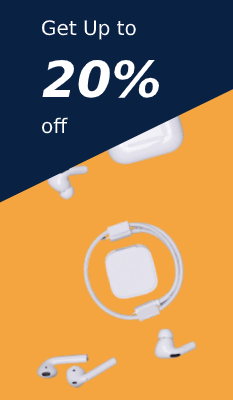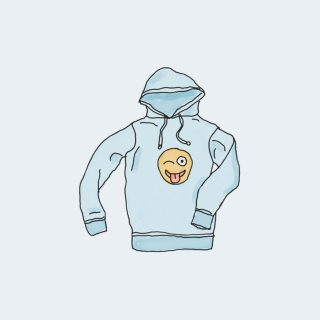
Therefore, learning how to manage and reduce alcohol cravings should be a key part of successful treatment programs. Essentially, mindfulness is a tool that helps you make choices about your thoughts and behavior. It teaches you to observe rather than react, strengthening your ability to “ride out” unpleasant feelings and cravings. This generally includes meditation, but you might also choose to set daily aspirations, or practice performing everyday activities mindfully.

Practice Coping Skills
Some small clinical studies have shown it can reduce alcohol cravings and alcohol withdrawal symptoms. Most times, alcohol cravings are a psychological response to certain situations or from exposure to a trigger. Overcoming these cravings often involves various strategies such as alcohol detox, alcohol rehab, cognitive-behavioral therapy, support groups, and lifestyle adjustments. When people develop an alcohol addiction, they will likely have cravings for alcohol when they aren’t actively drinking. Even some people who aren’t alcoholics still have cravings for the substance.
Seek Professional Help for Alcohol Cravings
During that time, you can distract yourself with an engaging alternative to drinking. You might go for a walk, listen to music, or try a new sober hobby. By the time you leave rehab, you’ll have plenty of practice responding to triggers.
Understanding alcohol cravings
Mindfulness has its roots in ancient Buddhist practice, and is essentially a form of mental training. When used in addiction treatment, the goal of mindfulness is to become fully aware of things as they are at the present moment, and to accept them. This can be very useful in breaking mental “loops” and establishing new behavior. Cravings for alcohol curb alcohol cravings are a very common part of recovery from alcohol use disorder. If you are experiencing these, it is important to know that they are not your fault—and that you are not powerless in the face of them. At Ria, we offer weekly meetings with certified counselors to help members stay on track and build skills for long-term change.
Kavanagh, David, et al. “Measurement of alcohol craving.” Addictive Behaviors, February 2013. In this video, Consultant Psychiatrist David McLaughlan, describes the temporary nature of cravings, rising and falling like a wave. Learning how to “surf the urge” involves accepting the craving is there and actively distracting yourself. You might reach for alcohol when you’re really just thirsty, says Crews. Drink a cup of soothing tea or a tall glass of water before you imbibe—once your thirst is quenched, you may not feel the need for as much—or any—alcohol. Instead of aiming for complete abstinence, for instance, aim to drink fewer than seven days a week.
Autism and learning disability
- When she quit drinking in 2019, she dedicated herself to learning about alcohol’s influence on the brain and how it can cause addiction.
- Just incorporating them into normal meals and eating an otherwise balanced diet consisting of fruits, vegetables, and proteins will provide great nutritional value that promotes recovery.
- It can lead to dangerous health effects and make symptoms worse.
- When you’re having a good time, you find it hard to stop, especially in the company of friends having the same amount.
It’s essential for individuals working towards recovery to recognize their triggers and develop Drug rehabilitation healthier coping mechanisms to navigate these cravings effectively. If you have severe vomiting, seizures, or delirium tremens, the safest place for you to be treated is in a hospital. For delirium tremens, treatment in an intensive care unit (ICU) is often required.
Make time for self-care
Families and friends play an important role in supporting a loved one dealing with alcohol cravings. Alcohol cravings may indicate a deeper problem that needs professional attention if they occur frequently and become difficult to control. You may need further support if you experience them regularly or find they are disrupting your work and social life. Mindfulness-based techniques – practising deep breathing, meditation, body scanning or yoga can reduce stress and help you to be more aware of your cravings without acting on them. These techniques encourage calmness and self-awareness, making it easier to resist urges. Prepare yourself for those times when someone is going to offer you a drink.

Diagnosing alcohol withdrawal

While it’s difficult to completely stop the urge to drink, there are several strategies to manage and mitigate these cravings. Moreover, maintaining a balanced diet high in protein, complex carbohydrates, and healthy fats can help regulate blood sugar levels. Fluctuations in blood sugar can trigger cravings of many kinds, so keeping your blood sugar steady may help reduce the desire for alcohol. The “Five Ds” are more popularly known in the management of nicotine cravings, but are just as helpful in managing alcohol cravings. The very first step in managing an alcohol craving is recognizing it. Be kind to the sensation of cravings—your perspective and attitude toward cravings influence how you manage them.
With practice, these techniques can increase self-awareness and provide a more nuanced understanding of one’s cravings, making it easier to manage them. Journaling – writing down your feelings, thoughts or experiences can help you process emotions, release tension and identify triggers for your cravings. Journaling can also be used to reaffirm your reasons for cutting back or quitting alcohol and stay on track with your progress. Cutting back or quitting drinking can lead to alcohol cravings. These can feel quite powerful and can make it difficult to resist the urge to drink. However, with the right coping mechanisms in place, you can overcome cravings and continue along your path to wellbeing.
Alcohol triggers this same system, causing our brains to consider drinking an important activity that we should repeat. A brain chemical called dopamine, in particular, helps turn drinking into an unconscious habit which is uncomfortable to resist. The National Institute on Alcohol Abuse and Alcoholism (NIAAA) defines alcohol cravings as “a strong desire or sense of compulsion” to drink. Cravings may also include intense, frequently occurring thoughts about alcohol. Navigating alcohol cravings is certainly challenging, but remember, there’s strength in numbers. Both professional support groups and personal networks play intrinsic roles in recovery.







Leave a Reply